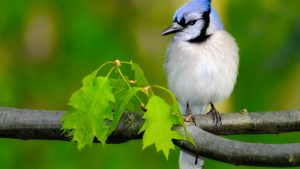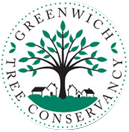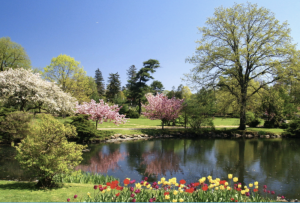By Mary Shaw Marks
Did you know that Governor Ned Lamont designated April 2023 as Connecticut Native Plant Month. Upon learning of the accelerating loss of native trees and plants from the Garden Club of America, Governor Lamont chose to act.

Why is this significant? It is quite natural to take trees for granted. After all, we were born into this green garden of Eden. Along the way we’ve upset the critical balance nature provides by replacing plants native to our region with large expanses of lawn and exotic imported trees. While these landscapes may look pretty, to a caterpillar that our birds feed upon they are about as nutritious as a parking lot.
The native trees in our yards play a critical role in providing food and habitat for our pollinating insects, birds, and bees. When there are no native trees to supply food, there are very few insects, and if there are no caterpillars, there are no birds. Our own human food system also depends on a healthy insect population for pollination.
Why is this? Most insects have co-evolved with native trees and plants over millions of years and rely on them to generate their food. Plants don’t want to be eaten so they have developed their own defenses, thus creating a balance where they are nibbled, not destroyed, and insects have their dinner. This explains why many caterpillars only eat certain plants, like milkweed, and why native trees may be very healthy despite having a few holes in their leaves. This co-evolution supports a complex web of life.
THE SINGLE MOST IMPORTANT THING YOU CAN DO FOR BIRDS IS TO PLANT AN OAK TREE!
Well known expert and author of The Nature of Oaks, Douglas Tallamy, explains that North America has over 90 native species of Oaks hosting more than 897 species of caterpillars. These caterpillars fuel the food web with more species dependent on oaks than on any other plant. He notes that you really can bring an enormous amount of life into your yard by planting them and how well suited they are to suburban landscapes as you can easily plant underneath them as they grow tall. It appears the White Oak tree is Connecticut’s state tree for good reason.
In the runner up categories, you have the beautiful Pussy Willow feeding 400+ species. Black Cherry and American Plum support 400+ with flowers full of life in spring when Weeping and Ornamental Cherry provide scant food. River Birch, White Birch and Shaggy Birch are stars at 400+ with the shaggy bark offering many great nesting and hang-out spots. Both native and imported Crabapples host 300+, one of few imported species to provide nutritious nectar. Red and Sugar Maple come in with 280+ and are a great alternative to Japanese and Norway Maples which support little life. White Pines host 200+ and are great in woodlands. Like Silver Maples, they drop limbs and not recommended in yards. Native Dogwood has splendid spring flowers and berries that ripen in the fall exactly when birds need to fatten up.
Smaller understory trees such as Serviceberry and Redbud have early spring flowers and berries and seeds birds love. Native evergreens such as Eastern Red Cedar, Eastern White Pine, and American Holly provide food and places to shelter year-round. Seek out native and not cultivated varieties for the biggest impact.
We are currently experiencing an insect apocalypse, a crashing of our life supporting population. While we may happily celebrate the relative lack of annoying mosquitoes and flies, this is an ecological disaster. Since 1970 we have lost one third of our bird population. One third. Most especially the “backyard birds” whose songs we associate with spring days and time spent outdoors. In most yards 92% of green space is lawn, 75% of the plants are alien, and 10% are invasive, all planted by homeowners like us.
HOW WE LANDSCAPE OUR YARDS REALLY DOES MATTER.
Suburbs represent an opportunity and gardening is taking on a critical role. It is now within the power of individual homeowners to make a difference with the selection of trees and plants they choose. Think of that busy mother chickadee whose baby requires 3,000 caterpillars before leaving the nest!
In choosing trees to plant this growing season consider one of these stars that will offer you many years of beauty, shade and clean air while hosting and feeding the birds that sing to you each morning. The Greenwich Tree Conservancy works to plant, preserve, and protect wisely for the future health of our magnificent local ecosystem. The lush green garden we all take for granted.
he Greenwich Tree Conservancy is a non-profit organization dedicated to preserving and enhancing the trees of Greenwich for the benefit of community health and quality of life.
Mary Shaw Marks is a member of the Greenwich Tree Conservancy Board of Directors
This story originally appeared at https://www.greenwichsentinel.com/2023/05/06/column-why-plant-native-trees/


